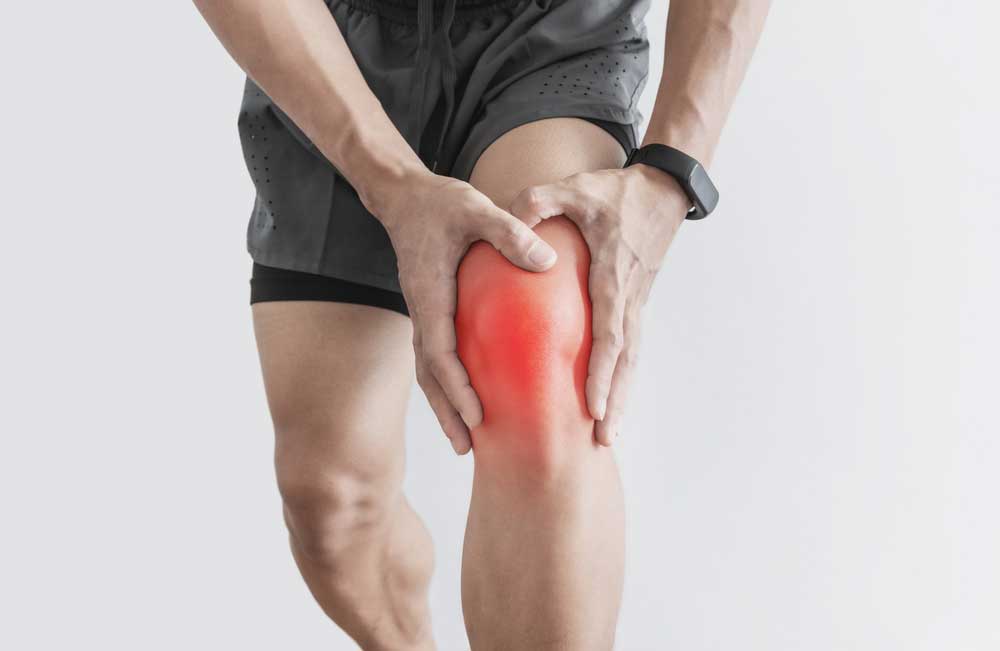Your knees absorb up to seven times your body weight with each step, making them vulnerable to both sudden injuries and gradual wear. From athletes to office workers, knee problems affect millions of Americans yearly, often leading to chronic pain that can limit daily activities and reduce quality of life.
While treating existing knee problems is important, prevention offers a smarter, more cost-effective approach to maintaining healthy joints. Consider that your knees endure over a million steps annually—that’s a million opportunities to either protect or potentially harm these vital joints.
Let’s explore practical strategies to safeguard your knees, whether you’re training for performance or simply wanting to stay mobile and pain-free as you age.
The Mechanics of Knee Protection
Your knee joint works like a complex hinge, connecting your thigh bone (femur) to your shin bone (tibia). It relies on a network of ligaments, tendons and cartilage working together to support fluid movement. The ligaments and cartilage act as natural shock absorbers, while muscles around the joint provide stability and strength.
Many knee injuries occur from simple movements gone wrong: an awkward twist while standing up, a misstep on uneven ground or poor form during exercise. By practicing proper movement techniques, you can significantly reduce your risk of both acute injuries and chronic knee problems.
Proper Movement Techniques
Athletes often spend years perfecting their form, but even daily activities require proper movement patterns to protect your knees. Starting with the basics can significantly reduce your risk of injury while strengthening the supporting structures around your knee joint.
Proper movement starts with maintaining good posture, especially when bending or lifting. During these activities, ensure your knees track directly over your toes, not letting them collapse inward or bow outward. A good rule of thumb is to imagine you are sitting down into a chair: keeping your chest up and pushing your hips back with knees straight forward. The same principle applies whether you’re picking up groceries, climbing stairs or lifting at the gym.
Watch for warning signs of improper movement. If you notice clicking, popping, or grinding sensations in your knees during regular activities, you may need to adjust your movement patterns. These sounds often indicate stress on your joint that could lead to problems over time.
Beyond Basic Movement
Strong, resilient knees require more than just good movement patterns, they rely on strong supporting muscles to function properly and prevent injury. By understanding effective ways to strengthen and stabilize your lower half, you can create a powerful foundation for joint health.
Building Strength and Stability
The key muscles to strengthen include your quadriceps (front thigh), hamstrings (back thigh) and hip muscles. These muscle groups work together to stabilize your knee during movement. Start with controlled bodyweight exercises before progressing to more challenging movements.
It is important to focus on quality over quantity when performing strengthening exercises. Perfect form with lighter resistance builds better movement patterns than struggling with heavier weights. As you build strength, you can gradually incorporate more dynamic exercises that challenge your balance and control.
Smart Exercise Choices
Protecting your knees doesn’t mean giving up your favorite activities. Instead, it means approaching them intelligently. Start by choosing exercises that match your current fitness level and gradually increase intensity as your strength improves.
Low-impact activities like swimming, cycling and elliptical training provide excellent cardiovascular benefits while minimizing stress on your knees. If you enjoy running, alternate between high-impact and low-impact days to give your joints time to recover.
Remember, taking rest days isn’t a sign of weakness, it’s essential for preventing overuse injuries that come from pushing too hard too quickly.
Lifestyle Factors
Simple daily choices play a crucial role in maintaining healthy knees. Weight management stands as one of the most effective ways to protect your joints — every pound lost reduces pressure on your knees by four pounds during walking activities and up to seven pounds when climbing stairs.
Your choice of footwear also matters more than you might think. Shoes with proper arch support and cushioning help absorb impact that would otherwise travel straight to your knees. You should replace athletic shoes regularly, as worn-out cushioning can’t protect your joints effectively.
Workplace habits also affect knee health. If you sit for long periods, take regular breaks to stand and stretch. Small adjustments to your workspace ergonomics can prevent compensatory movements that stress your knees.
When to Seek Professional Help
While many knee issues respond well to preventive measures, certain signs indicate you need professional evaluation. Don’t ignore persistent pain that lasts more than a few days or swelling that doesn’t improve with rest and ice. These symptoms could signal underlying problems requiring medical attention.
Watch for changes in your movement patterns. If you start limping, favoring one leg, or notice your knee giving way during normal activities, consult a healthcare provider. Early intervention often prevents minor issues from becoming major problems. Similarly, any clicking, popping, or grinding sensations accompanied by pain warrant professional assessment.
Schedule Your Consultation With a Knee Specialist in Phoenix
Taking proactive steps to protect your knees — including seeking help for pain early — can help you maintain an active, healthy lifestyle for years to come. Your knees support you through every step of life, make sure you’re giving them the care they deserve.
Contact Mattalino Orthopaedic in Scottsdale, AZ, to schedule your initial consultation with Dr. Mattalino today to learn more about personalized strategies for keeping your knees healthy and strong. We’re here to help you move better, feel better and stay active at every stage of life.
